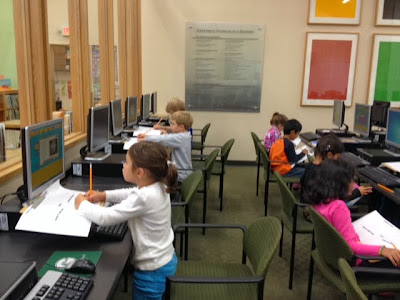"Oh, No!" By Candace Fleming
Read to: Pre-K, Kinder, and Primer
Skills: Retelling the order of events using sequencing words
This week we decided to use our new puppet theatre and perform a puppet show to the story, "Oh, No!" by Candace Fleming. The kids loved it. We had to change the story slightly because we were short on one of the animals in the story, but the kids did not seem to notice. Ms. Hagen was my puppet master while I read the slightly altered script. We really do make an awesome team! Before the lesson we discussed sequencing words and told the children to do their best listening so they could help us retell the story. After the performance we asked for helpers to tell us the order of the events that occurred. They did a super job and could pretty much remember the entire story step by step!
In first grade this week they were done with their Nocturnal animal reports and they invited me to come see them present them to the class. I was so impressed by the wonderful reports that they wrote. They were informative and they did a great job reading them out loud. They also created their animal and stuffed it to look 3D. Boy were they cute and really well done! That evening the entire grade level came back to school and once it was dark out they were to hunt the school grounds to find their animal! The teachers had hid them all around (in that particular animals most likely habitat) and put glow in the dark tape on them. So before the hunt the kids were handed flashlights and they were ready to go find their animal. How cool is that? I am sure they had fun!
"Twister" by Darlene Bailey Beard
Read to: 3rd Grade
Skills: Example of a personal narrative
In 3rd grade they are beginning to write personal narratives in their classes. We discussed that when writing one of the best ways to get a feel for how to write on a certain topic is to read and look at examples of how other writers have written them. These are called mentor texts. Together we read, "Twister" by Darlene Bailey Beard. I had to borrow this book as we currently don't have it in our collection, but it is a super example of an important or scary event that most likely occurred in the author's life. It is filled with great details, imagery, and dialogue. It also begins with a super hook which we discussed is important in order to grab your reader right from the beginning. I hope to read a few more examples of personal narratives with them soon to continue to give them some good writing ideas.
I hope everyone had a great week! Until next time, Happy Halloween!



















